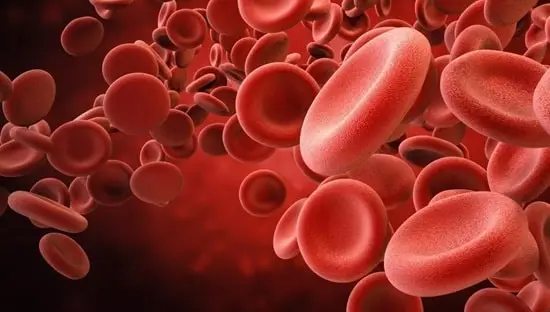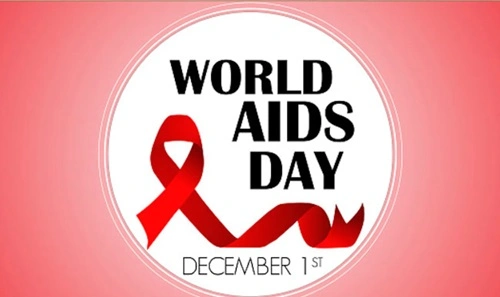Blood is a body fluid that flows throughout the body constantly. It has four main constituents: red blood cells (RBCs), white blood cells (WBCs), platelets, and the liquid component called plasma. Blood transports the essential nutrients and oxygen throughout the body. Blood also protects the body from infections and regulates body temperature.
A complete blood count (CBC) test is part of a routine checkup where the blood is tested to assess overall health or to check for diseases. The CBC measures the amounts of different elements in the blood, namely RBCs, WBCs, platelets, and haemoglobin (oxygen-carrying protein in the RBCs). It also checks for the size of blood cells, as well as other vital characteristics such as haematocrit (percentage of RBCs in the blood) and mean corpuscular volume (MCV). Let us explore what MCV is and what the different levels of MCV mean.

What Is Mean Corpuscular Volume?
Mean corpuscular volume (MCV) is a measure used to identify the average size of RBCs in your blood. RBCs carry oxygen from the lungs to all tissues of the body. The tissues take up oxygen to produce energy and release carbon dioxide as waste, which is taken by the RBCs to the lungs where it is exhaled out of the body. Owing to this important responsibility, the size of your RBCs is a crucial index to assess how successful they are in supporting the health and function of your organs and tissues.
Deviations in MCV from the normal may be a sign of certain blood disorders or other medical conditions. However, MCV cannot be used alone to know the health of your RBCs or diagnose a condition. It has to be considered along with the results of other indices, namely:
- Red cell distribution width (RDW): The variations in size and volume of your RBCs.
- Mean corpuscular haemoglobin (MCH): The amount of haemoglobin in your RBCs.
- Mean corpuscular haemoglobin concentration (MCHC): The average haemoglobin concentration in your RBCs.
A normal MCV value is between 80 and 100 femtolitres (fl). Let us look at the changes in MCV in detail and what they indicate.
Low MCV (Microcytosis)
Low MCV, also called microcytosis, means the size of your RBCs is smaller than normal. It is usually seen with microcytic anaemia where the RBCs do not have enough haemoglobin. Microcytosis is commonly seen in the following conditions:
Iron-deficiency anaemia: This disorder is characterised by low levels of iron in the body and symptoms like fatigue, pale skin, light-headedness, and dizziness. The body requires iron to produce healthy RBCs. Iron-deficiency anaemia can be caused by:
- Dietary deficiency of iron
- Conditions that affect the body’s ability to absorb iron, such as coeliac disease or gastric bypass surgery
- Blood loss due to problems like heavy menstrual periods or traumatic injuries
Thalassaemia: Thalassaemia is an inherited blood disorder that disrupts the production of normal haemoglobin in the body. This disorder is characterised by low haemoglobin and a low number of healthy RBCs in the bloodstream. Those with mild thalassaemia may have microcytosis without anaemia. Symptoms depend on the type and severity of thalassaemia and include fatigue, difficulty breathing, dizziness, feeling cold, and increased susceptibility to infections.
Anaemia of chronic disease: Long-term conditions, like congestive heart failure, obesity, kidney disease, cancers, or autoimmune diseases (immune system mistakenly damaging the body’s cells) can also affect the body’s ability to produce healthy RBCs.
High MCV (Macrocytosis)
High MCV indicates that RBCs in the blood sample are larger than normal. This condition is also known as macrocytosis. These abnormal RBCs may lack the nutrients required for RBCs to function, as seen with macrocytic anaemia. Symptoms of macrocytosis can be as varied as its causes.
Macrocytosis can be caused by problems in the bone marrow where RBCs are produced. It may also be caused by the dietary deficiency of some essential nutrients or conditions that affect the body’s ability to absorb nutrients. Common conditions that cause high MCV include:
Vitamin B12 deficiency: This condition occurs when you are not eating enough foods with vitamin B12 or the body is incapable of absorbing vitamin B12 adequately due to conditions such as gastritis or digestive diseases. Poor appetite, weakness, tingling or numbness in the hands and feet, feeling irritable or depressed, and vision problems are some symptoms of vitamin B12 deficiency.
Pernicious anaemia: Vitamin B12 deficiency can be caused by an autoimmune disorder called pernicious anaemia where the stomach cannot absorb vitamin B12. Early symptoms are mild, with diarrhoea/constipation, pale skin, loss of appetite, and shortness of breath. However, if left uncorrected, it can lead to severe symptoms, like weight loss, muscle weakness, fast heartbeats, and memory loss.
Folate (vitamin 9) deficiency: Folate is used in the production of new RBCs. Folate deficiency can be caused by factors, such as a diet low in folate, digestive diseases that affect folate absorption, excessive alcohol use, or medications such as anti-seizure drugs. Shortness of breath, pale skin, mouth sores, and memory loss are some symptoms of folate deficiency.
Macrocytosis is also seen in conditions such as liver disease, hypothyroidism (low thyroid hormone), and myelodysplastic syndrome (a cancer that prevents the bone marrow from producing normal RBCs).
Although abnormal MCV values may signal some medical conditions, they cannot be used alone to diagnose a condition. The MCV result is interpreted along with the results of other tests, your symptoms, and your medical history to make an accurate diagnosis.
When Do You Need an MCV Blood Test?
MCV is done as part of the CBC test that determines the amounts and characteristics of different components in your blood. CBC is a common test done as part of a routine physical exam or to investigate any unusual symptoms like weight loss, fever, or fatigue. It may also be done if you have symptoms of anaemia or to diagnose or monitor certain blood disorders and long-term conditions that can cause anaemia. The MCV value helps to diagnose the type of anaemia.
What Happens During an MCV Blood Test?
A CBC includes the assessment of MCV along with other components of the blood and requires a blood sample. A healthcare provider will insert a needle in a vein of your arm to collect a small amount of blood. You may feel a slight prick when the needle is inserted and removed. The blood will be collected in a small vial or test tube and sent for testing. The entire process takes less than 5 minutes.
Conclusion
MCV is a blood parameter that indicates the size of RBCs in a blood sample. While it cannot be used independently to diagnose a condition, it is interpreted along with other CBC components to diagnose and monitor blood disorders, including anaemia and various other medical conditions. This assists healthcare providers in offering appropriate guidance and treatment. Understanding your RBC status and overall blood health enables the timely identification of many diseases and deficiencies.

